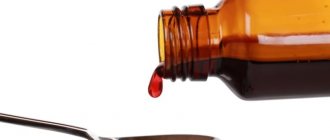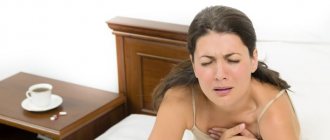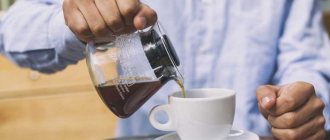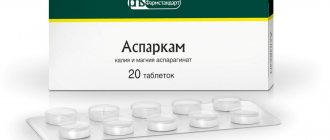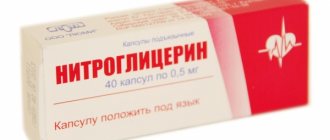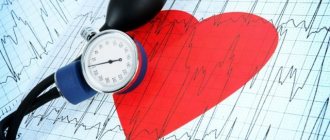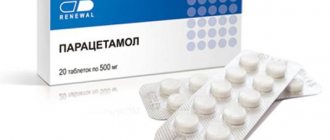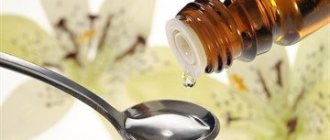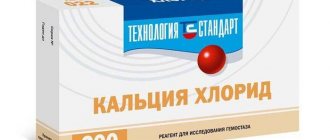The problem of combating hypertension has been worrying all leading cardiologists and pharmacists for decades. It is the consequences of this pathology of the cardiovascular system that claim many lives every year. And, despite the large number of means to normalize blood pressure, choosing treatment for hypertension can sometimes be quite difficult.
For example, such common types of drugs as angiotensin-2 blockers and ACE blockers have a fairly large number of contraindications and do not work for everyone. That is, some people have drug resistance, and such drugs are simply not effective for them.
In cases where the most common blood pressure medications are not effective, the patient may be prescribed other options. For example, calcium channel blockers have a pronounced hypotensive effect.
They do not directly affect the hormones that cause hypertension, but contribute to the occurrence of physical processes that lead to the expansion of vascular elements, normalization of blood circulation and a decrease in pressure values. A well-known example of such drugs is Norvasc.
General information about the medication
Norvasc is a slow-type calcium channel inhibitor. It prevents the passage of such ions into smooth muscle cells.
This effect of the drug causes a number of physical processes that lead to a decrease in readings on the tonometer. In addition, this remedy has a positive effect on the heart muscle. Norvasc can be used not only for hypertension, but also for some other heart diseases.
One of the distinguishing features of this product is the fact that it does not affect the level of cholesterol and glucose in the blood. Therefore, Norvasc is allowed even for people with diabetes.
The main active ingredient of Norvasc is amlodipine. This substance is a dihydropyridine derivative. Its amount in one serving of the drug depends on its release form.
In addition to the main ones, Norvasc contains a number of additional ingredients, such as microcrystalline cellulose, calcium hydrogen phosphate, sodium carboxymethyl starch, and magnesium stearate. This list is the same for all forms of release of this product.
The drug has a prolonged effect. After a single dose, its effect lasts for a whole day.
Norvasc is sold with a doctor's prescription. Moreover, you can find it in almost any pharmacy. The country of origin of Norvasca is Germany. However, there are analogues of this product and a domestic manufacturer.
This medicine does not have special temperature storage conditions. The main thing is to limit its availability to children and animals. Shelf life is 4 years. After this time, the risk of side effects from taking the drug increases, and its beneficial properties decrease.
The drug has undergone animal and human studies. Therefore, its effectiveness is recognized throughout the world.
Drug interactions
Norvasc can be safely used in the treatment of arterial hypertension in combination with alpha-blockers, thiazide diuretics, angiotensin-converting enzyme inhibitors or beta-blockers. In patients with stable angina, it can be combined with other antianginal drugs, for example, short- or long-acting nitrates, beta-blockers.
Amlodipine can also be safely used concomitantly with antibiotics and oral hypoglycemic drugs.
When used together with non-steroidal anti-inflammatory drugs, including indomethacin, no clinically significant interaction was found.
The simultaneous use of Norvasc with grapefruit juice is not recommended; use of inhibitors of the CYP3A4 isoenzyme requires caution.
When Norvasc is used simultaneously with certain medications, the following effects may occur:
- Thiazide and loop diuretics, angiotensin-converting enzyme inhibitors, beta-blockers, nitrates: enhancing the antihypertensive and antianginal effect of Norvasc;
- Alpha1-adrenergic blockers, antipsychotics: increased antihypertensive effect of Norvasc;
- Simvastatin (at a dose of 80 mg with repeated simultaneous use of amlodipine at a dose of 10 mg): increased exposure to simvastatin (it is necessary to limit its dose to 20 mg);
- Antiviral drugs (eg, ritonavir): increased plasma concentrations of amlodipine;
- Isoflurane, antipsychotics: enhancing the antihypertensive effect of dihydropyridine derivatives;
- Calcium preparations: decreased effect of Norvasc;
- Lithium preparations: increased manifestations of their neurotoxicity (in the form of nausea, vomiting, diarrhea, ataxia, tremor, tinnitus).
Norvaska release options
Norvasc is sold in tablet form. However, such a medicine may have different dosages of the active component in its composition.
Sales options for Norvasc tablets:
- Norvasc with the 5 mg mark. Such tablets are almost white in color and have a very interesting shape, which looks like a faceted emerald. There is a separation line on the tablet. There is a logo on one side and the dosage is engraved on the other.
- Norvasc with the amount of “working” component 10 mg. The medicine has a light color and an octagonal shape. The tablets are engraved with the logo and dosage. There is a risk to divide the tablet into equal portions.
The product is available in blisters, each of which contains 10 or 14 servings. One cardboard package contains from 1 to 3 plates.
Release form and composition
Norvasc is produced in the form of tablets: almost white or white, in the shape of an emerald (octahedron with uneven sides), with “Pfizer” engraved on one side and (depending on the dosage) “AML-5” or “AML-10” - to another (10 or 14 pieces in blisters, 1 or 3 blisters in a cardboard box).
1 tablet contains:
- Active substance: amlodipine – 5 or 10 mg (in the form of amlodipine besylate – 6.944 or 13.889 mg, respectively);
- Auxiliary components: microcrystalline cellulose – 124.056/248.111 mg; sodium carboxymethyl starch – 4/8 mg; calcium hydrogen phosphate – 63/126 mg; Magnesium stearate – 2/4 mg.
Pharmacodynamics of Norvasca
Norvasc is a slow calcium channel antagonist. The main working substance of this drug is amlodipine. It is a derivative of a substance such as dihydropyridine.
This drug has a pronounced antihypertensive and antianginal effect. Therefore, it is used not only for the treatment of hypertension.
The “working” component of the drug quickly creates bonds with dihydropyridine receptors. Due to this, calcium channels are blocked. Norvasc helps reduce the leakage of calcium into smooth muscle tissue. In this case, the drug primarily affects the cells of the cardiovascular system.
Thanks to this, the vascular walls relax. They expand, blood circulation is normalized, and pressure decreases.
The drug also has an antianginal effect. This occurs due to dilatation of the elements of the circulatory system and a decrease in pressure on the heart muscle. Thanks to this action, the need of the heart “pump” for oxygen and energy resources is reduced.
In this case, the elements of the coronary type are relaxed, which increases the blood supply to the myocardium.
Norvasc has no effect on heart rate. Therefore, when taking this drug, the patient does not experience serious discomfort. With a one-time daily dose, a gradual decrease in pressure values occurs. Due to this, when taking this drug, the likelihood of acute hypotension is very low.
Norvasc is able to increase tolerance to physical pressure. This effect is especially pronounced in the presence of angina pectoris. Since in this case the number of attacks is significantly reduced.
After a heart attack, with coronary atherosclerosis and during artery surgery, this drug can be taken for preventive purposes. Its use reduces the risk of thickening of the arteries and also reduces the likelihood of death.
The drug does not affect fat and carbohydrate metabolism. This sets it apart from many other antihypertensive drugs.
Pharmacokinetics of the drug
After oral administration, the drug is gradually absorbed from the stomach and intestines into the circulatory system. Moreover, its maximum amount in the plasma component of the blood is observed no earlier than after 6-12 hours. This ensures a gradual decrease in pressure.
The drug is almost completely bound to blood proteins. Therefore, in case of an overdose, hemodialysis is not used due to the lack of the desired effect. The bioavailability of Norvasc can range from 60 to 80%. Moreover, the time of eating does not have any effect on this indicator.
The half-life of the drug can last up to 50 hours. However, the equilibrium dosage of the active ingredient in the body when taking the medication as a course is achieved after a week. Norvasc is metabolized in the liver, forming inactive metabolites.
The drug is excreted primarily in the urine in the form of inactive substances processed by the liver. However, unchanged amlodipine can also be found in this biological fluid. A small amount of the drug is also present in feces.
People in their seventies may experience increased blood concentrations and half-life of the drug. Therefore, in this case, adjustment of the dosage of the medicine may be necessary.
In patients with impaired renal function, no significant changes in the action of the drug were found. Therefore, in this case, the recommended amount of medication does not change.
Pharmacokinetics of the drug
The drug in tablet form is intended for oral administration. The tablet enters the stomach, where it breaks down into separate substances under the influence of gastric juice. The maximum concentration is reached 6-12 hours after administration. The bioavailability of the drug is 64-80%. Plasma protein binding is high and reaches 97.5%.
The drug penetrates the blood-brain barrier. Eating food does not affect the absorption of the drug.
Metabolism occurs in the liver. The half-life is 30-50 hours. If there are problems with the kidneys or liver, the half-life increases to 60 hours. The maximum therapeutic effect is noticeable within a week after the start of therapy. Metabolites are excreted through the kidneys in the urine. Hemodialysis is ineffective during elimination.
How the drug works
The principle of operation of the described product is quite simple. Below is an explanation from which even the uninitiated will understand all the effects of Norvasc.
Mechanism of action of the drug:
- The drug begins to bind to dihydropyridine receptors. Due to this, the flow of calcium ions into the cells of vascular smooth muscle tissue is significantly reduced.
- This action leads to relaxation and expansion of the elements of the circulatory system. Moreover, it is most pronounced on the vessels.
- When blood vessels dilate, the intensity of blood circulation is restored. The pressure gradually decreases, along with the load on the heart.
- The elements of the circulatory system in the myocardial area also expand. In this case, not only healthy but also ischemic parts are exposed to such effects. This leads to better saturation of this organ with oxygen and other necessary substances.
- Myocardial ischemia is reduced. At the same time, the load on the heart and its need for oxygen are reduced.
- The drug increases the body's tolerance to physical activity. Thanks to this, angina attacks occur less frequently and their severity is reduced.
Who needs this medicine
Norvasc has a pronounced hypotensive effect. And unlike many antihypertensive drugs, it very gently and smoothly lowers blood pressure. However, such a remedy can be used not only for hypertension.
Who needs Norvasc treatment:
- Hypertension of the classical type. The drug is especially effective in the first and second stages of the disease.
- Angina pectoris of various etiologies. The drug can be used both as a primary medicine and as an additional agent in general therapy.
- Arteriosclerosis, post-infarction condition, and recovery time after atheroplasty. For such problems, the medication is used to prevent deaths.
Advantages and disadvantages of the drug
Norvasc is a very popular calcium channel inhibitor drug. It has a fairly large number of advantages.
Advantages of the drug:
- Has a prolonged effect. Therefore, it is enough to take it only once a day.
- It has several positive effects on the body at once. Norvasc not only lowers blood pressure, but also improves heart function, preventing the occurrence of acute situations.
- Norvasc can be taken in long courses. In this case, addiction does not occur and its effectiveness does not decrease.
- Does not affect the amount of sugar and bad cholesterol in the body. Therefore, this medication can be used for diabetes and some other diseases.
- The pharmacological properties of the drug are not affected by meal time. This is convenient, because the medication can be taken both before and after breakfast.
- The effectiveness of the drug is not affected by gender and race, which is not typical for most antihypertensive drugs.
- Norvasc gradually lowers blood pressure. Due to this, when taking it, the risk of acute hypotension is low.
- The drug increases the patient's endurance. When taking it, angina pectoris occurs less frequently during physical activity.
Norvask has not only advantages, but also disadvantages. And they also need to be taken seriously.
Disadvantages of Norvasc:
- The drug has a fairly extensive list of side effects. Therefore it must be used with great care.
- The product smoothly and slowly lowers blood pressure. Therefore, it will not be possible to instantly normalize pressure readings on a tonometer.
- Norvasc changes its properties not only when combined with a number of medications, but also in combination with certain products.
- Norvasc has several contraindications that are not specific to antihypertensive drugs.
Contraindications
Absolute:
- Severe form of arterial hypotension (blood pressure (BP) less than 90 mm Hg);
- Hemodynamically unstable heart failure after myocardial infarction;
- Obstruction of the outflow tract of the left ventricle (including severe aortic stenosis);
- Age under 18 years (due to the lack of studies on the use of the drug in children and adolescents);
- Hypersensitivity to components.
Relative (should be used with extreme caution due to the high likelihood of side effects):
- Chronic heart failure (CHF) of non-ischemic nature, class III-IV;
- Liver failure;
- Unstable angina;
- Aortic stenosis;
- Hypertrophic obstructive cardiomyopathy;
- Mitral stenosis;
- Sick sinus syndrome (SSNS);
- Acute myocardial infarction (including the period for 1 month after it);
- Arterial hypotension;
- Combination with inhibitors or inducers of the CYP3A4 isoenzyme (blood pressure should be carefully monitored).
Since there is no data confirming the safety of using Norvasc during pregnancy, its use during this period is possible only if the expected benefit to the mother outweighs the threat to the health of the fetus.
If it is necessary to use the drug during lactation, breastfeeding should be stopped (due to the lack of information on the excretion of amlodipine in breast milk).
What side effects may occur when taking Norvasc?
The described remedy has a large number of side effects. Many of them are quite dangerous. However, they occur infrequently.
Possible negative consequences of taking Norvasc:
| Organ groups | Possible negative consequences of taking the medicine |
| The cardiovascular system | Tachycardia, acute hypotension, bradycardia, peripheral edema, exacerbation of cardiac muscle dysfunction, atrial fibrillation, shortness of breath, chest pain, fainting, vasculitis, heart attack. |
| Muscles, bones and joints | Myalgia, arthrosis, myasthenia gravis, arthralgia, back pain, muscle spasms, myasthenia gravis. |
| Nervous system | Pain in the head, increased drowsiness, insomnia, tremors of the limbs, sudden mood swings, nightmares, hypoesthesia, paresis, increased anxiety, memory impairment, ataxia, agitation. |
| Sense organs | Improper perception of taste, conjunctivitis, extraneous sounds in the hearing organs, vision problems, xerophthalmia, painful sensations in the visual organs, diplopia, problems with accommodation. |
| Digestive organs and liver | Feeling of nausea, vomiting, indigestion, stool disorder, increased gas formation, anorexia, pain in the stomach, dry mouth, dyspepsia, thirst, pancreatitis, increased appetite, hepatitis, increased activity of liver enzymes, gastritis, jaundice, increased amount of bilirubin, pancreatitis. |
| Hematopoietic system | Thrombocytopenic type purpura, thrombocytopenia, leukopenia. |
| Respiratory system | Dry cough, nosebleeds, rhinitis and shortness of breath. |
| Genitourinary system | Polyuria, impotence, decreased libido, increased urge to urinate, pain during urination, dysuria, nocturia. |
| Skin | Hyperhidrosis, cold sweating, dermatitis, abnormal skin pigmentation, alopecia, xeroderma. |
| Metabolic system | Increase or decrease in body weight, hyperglycemia. |
| The immune system | Skin rashes, severe itching, urticaria, redness of the skin. |
| Other problems | Gynecomastia, general body soreness, fever, chills, parosmia. |
If such unpleasant phenomena occur, continuing to take the drug is strictly prohibited. It is necessary to immediately stop treatment and consult a specialist.
What side effects might there be?
- Often there is a feeling of increased heartbeat, slight swelling of the feet and ankles, and a rush of blood to the face. Other reactions from the cardiovascular system are caused much less frequently. These include cardiac arrhythmias, shortness of breath, orthostatic hypotension, fainting, and chest pain.
Dizziness may occur during treatment
- The nervous system most often reacts with headache, drowsiness, fatigue, and dizziness. Other negative effects are rare. Their list includes sensations of tingling, burning and crawling on the skin, mood swings, increased excitability, migraine, weakness, insomnia.
- Reactions from the digestive system often include nausea and abdominal pain. Dyspepsia, diarrhea or constipation, anorexia, and dry mouth are not excluded. More serious consequences (pancreatitis, hepatitis, gastritis, hepatic cholestasis) are possible, but very rare.
- Allergic reactions mainly have skin manifestations (itching, rashes). In rare cases, swelling and erythema multiforme have been observed.
- Possible rhinitis, nosebleeds, cough in rare cases (respiratory system).
- Frequent or painful urination and erectile dysfunction (genitourinary system) may occur.
- In the musculoskeletal system, muscle cramps, pain in joints and muscles, and arthrosis are not excluded.
- Blood tests may reveal low levels of platelets and white blood cells.
Who should not use Norvasc for treatment?
Norvasc has some contraindications. And before taking it, you must make sure that they are absent.
Who should not take Norvasc:
- Negative reaction of the body to the components of the drug;
- Negative reaction of the body to other dihydropyridine derivatives;
- Severe hypotension;
- Obstructive lesions of the left ventricle of the heart and aortic stenosis;
- Cardiogenic shock;
- Minor children;
- Lactation period;
- Insufficient liver function;
- Unstable failure of the heart muscle.
There are also cases in which taking Norvasc is not prohibited, but requires increased attention. For such diseases, the drug is used if the benefit of taking it is greater than the risk.
Relative prohibitions on taking the drug:
- Chronic heart failure stage 3 and 4;
- Post-infarction period;
- Unstable angina;
- Stenosis of the aorta and mitral valve;
- Obstructive hypertrophic cardiomyopathy;
- Weakness of the sinus node;
- The period of bearing a child;
- Hypotension.
During pregnancy, Norvasc is prescribed extremely rarely. After all, it blocks the transport of calcium, and therefore can lead to developmental disorders in the fetus. In addition, not enough testing has been carried out regarding its safety during this period. However, if the mother’s condition is critical, then taking this remedy is still possible.
It is known that dihydropyridine derivatives can pass into breast milk. Therefore, if during lactation there is a need to use Norvasc, breastfeeding will have to be stopped.
When should you not take medicine?
Like any other drug, Norvasc has contraindications to therapy.
- It is not prescribed if the patient has hypertrophied sensitivity to at least one of the components.
- Therapy is excluded in people with severe hypotension when systolic pressure is less than 90 mmHg. Art.
- Do not use in cardiogenic shock. It is spoken of in extreme cases of left ventricular failure, when the heart sharply loses its ability to contract, causing the blood supply to organs and tissues to severely deteriorate.
Aortic valve stenosis
- Another contraindication is severe aortic stenosis. With this pathology, the opening of the aorta in the valve area narrows, as a result of which the outflow of blood from the left ventricle becomes difficult.
- The drug is contraindicated when a person has hemodynamically unstable heart failure after a heart attack.
- Norvasc is not prescribed to children under 18 years of age, since there are no full-fledged studies confirming its safety for a growing body.
- Use during breastfeeding is not recommended, as all calcium CCBs pass into breast milk.
- Safety during pregnancy has not been established, so the following recommendation is: take the drug only if you cannot do without it.
In addition to direct prohibitions on the use of Norvasc, there are situations in which treatment with it requires precautions.
The medicine should be used with caution in case of certain diseases of the heart and blood vessels:
- liver failure;
- aortic and mitral stenosis;
- CHF;
- acute heart attack (and for a month after it);
- weakness of the sinus node;
- tendency to lower blood pressure;
- hypertrophic obstructive cardiomyopathy.
Continuous monitoring of elderly patients is required because they have a reduced ability to eliminate the drug from the body.
It is recommended to discontinue therapy gradually by reducing the dose, although no withdrawal syndrome has been reported.
Good oral hygiene is required to prevent bleeding and sore gums.
Increased care is required when driving a car or moving machinery, as mild dizziness, drowsiness and other symptoms cannot be ruled out.
Drug overdose
It is very important to take Norvasc, following the dosages prescribed by your doctor. Otherwise, drug intoxication may occur. She has life-threatening and unpleasant symptoms.
Signs of overdose:
- Acute hypotension;
- Collapse;
- State of shock;
- Nausea and vomiting;
- Increased heart rate;
- Excessive peripheral vasodilation.
In case of overdose of the drug, first aid must be provided to the patient. To do this, he needs to take an absorbent and do a gastric lavage. This method is effective in the first two hours after taking the product.
To eliminate hypotension, it is necessary to place the patient on the sofa with his legs raised up. Drip administration of saline solution is possible.
To eliminate the effects of taking Norvasc, you can also take a vasoconstrictor. To stop calcium channel inhibition, calcium gluconate must be used.
Next, the patient is hospitalized and undergoes symptomatic treatment. In case of overdose of this drug, hemodialysis is not effective.
Side effects
- Nervous system: often - increased fatigue, dizziness, headaches, drowsiness; uncommon – general malaise, asthenia, paresthesia, hypoesthesia, tremor, peripheral neuropathy, mood lability, unusual dreams, insomnia, increased excitability, anxiety, depression, taste perversion, ringing in the ears; very rarely - increased sweating, migraine, agitation, apathy, amnesia, ataxia;
- Musculoskeletal system: uncommon - muscle cramps, arthralgia, back pain, myalgia, arthrosis; rarely - myasthenia gravis;
- Cardiovascular system: often – flushing of the face, peripheral edema (of the feet and ankles), palpitations; infrequently - excessive decrease in blood pressure; very rarely - fainting, orthostatic hypotension, vasculitis, appearance or worsening of CHF, heart rhythm disturbances (including atrial fibrillation, ventricular tachycardia and bradycardia), chest pain, myocardial infarction;
- Respiratory system: infrequently - nosebleeds, rhinitis, shortness of breath; extremely rarely - cough;
- Hematopoietic system: very rarely - thrombocytopenia, leukopenia, thrombocytopenic purpura;
- Digestive system: often – nausea, abdominal pain; uncommon – flatulence, constipation or diarrhea, dyspepsia, vomiting, anorexia, thirst, dry mouth; rarely – increased appetite, gum hyperplasia; extremely rarely - pancreatitis, gastritis, hyperbilirubinemia, increased activity of liver transaminases, jaundice (usually cholestatic), hepatitis;
- Urinary system: uncommon – nocturia, painful/frequent urination; very rarely - polyuria, dysuria;
- Organ of vision: infrequently - visual impairment, eye pain, accommodation disturbance, xerophthalmia, diplopia, conjunctivitis;
- Reproductive system: uncommon – gynecomastia, erectile dysfunction;
- Skin: rarely – dermatitis; extremely rarely - skin pigmentation disorder, xeroderma, alopecia;
- Allergic reactions: uncommon - rash (including erythematous and maculopapular rash, urticaria), itching; very rarely - erythema multiforme, angioedema;
- Metabolism: infrequently – decrease/increase in body weight; extremely rarely - hyperglycemia;
- Other: infrequently – chills; very rarely - parosmia.
Symptoms of an overdose of Norvasc include a sharp decrease in blood pressure with the possible appearance of reflex tachycardia and excessive peripheral vasodilation (with the likelihood of persistent and severe arterial hypotension, including shock and subsequent death).
For this condition, activated charcoal is prescribed (within 2 hours after taking the excess dose), and in some cases, gastric lavage. It is recommended to take active measures to maintain the function of the cardiovascular system, as well as monitoring indicators of lung and heart activity, monitoring circulating blood volume and diuresis. To normalize blood pressure and vascular tone, vasoconstrictor drugs are used (in the absence of contraindications); to eliminate the consequences of blockade of calcium channels, intravenous administration of calcium gluconate is prescribed. Hemodialysis is ineffective.
Compatibility of Norvasc with other medications
Norvasc can be used both as the only and as an additional medication in therapy. In the second case, it is very important that the treatment complex is compiled by a doctor. Indeed, when combined with certain substances, the described calcium channel blocker can have a distorted effect on the body.
Compatibility of Norvasc with other products:
| Groups of medications | Consequences of their combination with Norvasc |
| Adrenergic blockers, ACE inhibitors, diuretics | The drugs enhance each other's actions. Such combinations can be used. |
| Non-steroidal anti-inflammatory drugs | The effectiveness of Norvasc is greatly reduced. The likelihood of side effects increases. |
| Neuroleptics | Strengthening the hypotensive effect of drugs. Acute hypotension may develop. |
| Antiarrhythmic drugs | The negative inotropic effect of antiarrhythmic drugs may be enhanced. |
| Antidiabetic drugs | Such interaction is possible. No negative effect is observed. |
| Simvastatin | The bioavailability and effectiveness of Simvastin increases. Dose adjustment is necessary. |
| Antiviral drugs | The concentration of Norvasc increases. Your dosage may need to be adjusted. |
| Neuroleptics, as well as isofrulan | Strengthening the hypotensive effect of Norvasc. Acute hypotension may develop. |
| Calcium supplements | Reduced effectiveness of Norvasc. |
| Lithium products | Lithium intoxication may occur. |
In most cases, such drugs can be combined. However, this must be done very carefully and only with the permission of a doctor.
It is worth noting that Norvasc has fewer prohibited combinations than any other antihypertensive drugs. Therefore, it is often used in drug therapy.
Norvasc®
Amlodipine can be safely used for the treatment of arterial hypertension together with thiazide diuretics, alpha-blockers, beta-blockers or ACE inhibitors. In patients with stable angina, amlodipine can be combined with other antianginal agents, for example, long- or short-acting nitrates, beta-blockers.
Unlike other BMCCs, no clinically significant interaction of amlodipine (III generation BMCCs) was found when used together with non-steroidal anti-inflammatory drugs (NSAIDs), including indomethacin.
It is possible to enhance the antianginal and hypotensive effect of BMCC when used together with thiazide and loop diuretics, ACE inhibitors, beta-blockers and nitrates, as well as to enhance their hypotensive effect when used together with alpha1-blockers, antipsychotics.
Although negative inotropic effects have generally not been observed in amlodipine studies, some CBMCs may enhance the negative inotropic effects of antiarrhythmic drugs that prolong the QT interval (eg, amiodarone and quinidine).
Amlodipine can also be safely used concomitantly with antibiotics and oral hypoglycemic agents.
A single dose of 100 mg of sildenafil in patients with essential hypertension does not affect the pharmacokinetic parameters of amlodipine.
Repeated use of amlodipine at a dose of 10 mg and atorvastatin at a dose of 80 mg is not accompanied by significant changes in the pharmacokinetics of atorvastatin.
Simvastatin
: simultaneous repeated use of amlodipine at a dose of 10 mg and simvastatin at a dose of 80 mg leads to an increase in simvastatin exposure by 77%. In such cases, the dose of simvastatin should be limited to 20 mg.
Ethanol
(drinks containing alcohol):
amlodipine with single and repeated use in a dose of 10 mg does not affect the pharmacokinetics of ethanol.
Antivirals (ritonavir):
increases plasma concentrations of BMCC, including amlodipine.
Neuroleptics and isoflurane:
enhancing the hypotensive effect of dihydropyridine derivatives.
Calcium preparations
may reduce the effect of BMCC.
When combined with BMCC and lithium preparations
(no data available for amlodipine), possibly increasing the manifestation of their neurotoxicity (nausea, vomiting, diarrhea, ataxia, tremor, tinnitus).
Studies of the simultaneous use of amlodipine and cyclosporine in healthy volunteers and all groups of patients, with the exception of patients after kidney transplantation, have not been conducted.
Various studies of the interaction of amlodipine with cyclosporine in patients after kidney transplantation show that the use of this combination may not lead to any effect, or increase the minimum concentration of cyclosporine to varying degrees, up to 40%. These data should be taken into account and cyclosporine concentrations should be monitored in this group of patients when cyclosporine and amlodipine are used concomitantly.
Does not affect serum digoxin
and its renal clearance.
Does not significantly affect the action of warfarin
(prothrombin time).
Cimetidine
does not affect the pharmacokinetics of amlodipine.
In in vitro studies, amlodipine does not affect the plasma protein binding of digoxin .
,
phenytoin
,
warfarin
and
indomethacin
.
Grapefruit juice:
A simultaneous single dose of 240 mg of grapefruit juice and 10 mg of amlodipine orally is not accompanied by a significant change in the pharmacokinetics of amlodipine. However, it is not recommended to use grapefruit juice and amlodipine at the same time, since genetic polymorphism of the CYP3A4 isoenzyme may increase the bioavailability of amlodipine and, as a result, increase the hypotensive effect.
Aluminum- or magnesium-containing
antacids
: their single dose does not have a significant effect on the pharmacokinetics of amlodipine.
CYP3A4 isoenzyme inhibitors
: with simultaneous use of diltiazem at a dose of 180 mg and amlodipine at a dose of 5 mg in patients from 69 to 87 years of age with arterial hypertension. there was an increase in systemic exposure of amlodipine by 57%. Concomitant use of amlodipine and erythromycin in healthy volunteers (18 to 43 years of age) does not lead to significant changes in amlodipine exposure (increase in area under the concentration-time curve (AUC) by 22%). Although the clinical significance of these effects is unclear, they may be more pronounced in older patients.
Potent inhibitors of the CYP3A4 isoenzyme (for example, ketoconazole, itraconazole) may increase the plasma concentration of amlodipine to a greater extent than diltiazem. Amlodipine and inhibitors of the CYP3A4 isoenzyme should be used with caution.
Clarithromycin:
CYP3A4 isoenzyme inhibitor. Patients taking clarithromycin and amlodipine at the same time have an increased risk of low blood pressure. Patients taking this combination are advised to be under close medical supervision.
Inducers of the CYP3A4 isoenzyme
: There is no data on the effect of inducers of the CYP3A4 isoenzyme on the pharmacokinetics of amlodipine. Blood pressure should be carefully monitored during concomitant use of amlodipine and inducers of the CYP3A4 isoenzyme.
Tacrolimus
: When used simultaneously with amlodipine, there is a risk of increasing the concentration of tacrolimus in the blood plasma. To avoid toxicity of tacrolimus when used concomitantly with amlodipine. The concentration of tacrolimus in the blood plasma of patients should be monitored and the dose of tacrolimus adjusted if necessary.
Mammalian target of rapamycin (mTOR) inhibitors
mTOR inhibitors such as sirolimus, temsirolimus and everolimus are substrates of the CYP3A isoenzyme. Amlodipine is a weak inhibitor of the CYP3A isoenzyme. When used concomitantly with mTOR inhibitors, amlodipine may increase their exposure.
How to take the product
Each package of Norvasc contains instructions for use. It describes the basic principles of taking the drug. However, each specific case may have its own nuances in using the medication. Therefore, before starting treatment, you need to consult a doctor.
The drug is taken orally. It should not be chewed, but should be swallowed with plenty of liquid. It is better to do this in the morning, half an hour before meals.
To treat hypertension, a regimen is used that involves gradually increasing the dosage of the drug. In this case, the starting amount of the product will be one Norvasc 5 mg tablet. If this dose is not effective, you can increase it to 10 mg. However, it is important that there are no side effects.
For angina pectoris, the same scheme is used as for hypertension. However, in this case it is recommended to stick to a dosage of 5 mg.
This drug does not change its properties when taken by patients over 75 years of age. Therefore, dose adjustment is not necessary in this case. If the functions of the liver and kidneys are impaired, the half-life of the drug is prolonged. Despite this, there is no need to change the amount of the product.
You only need to take the drug once a day. In this case, the duration of the course of treatment is selected by the doctor individually.
special instructions
To avoid the development of soreness, hyperplasia and bleeding gums, you need to maintain dental hygiene and see a dentist.
Elderly patients require more careful monitoring of their condition.
Norvasc is not prescribed for hypertensive crisis (there is no data on its safety and effectiveness).
In chronic heart failure (NYHA class III and IV) of non-ischemic origin, there is an increase in the incidence of pulmonary edema in the absence of signs of worsening heart failure.
Impact on the ability to drive vehicles and complex mechanisms
Due to the likelihood of developing a pronounced decrease in blood pressure, drowsiness, dizziness and other side effects when driving vehicles and performing other potentially dangerous work, patients should be careful, especially at the beginning of a course of taking Norvasc and when increasing the dosage.
Additional recommendations for using Norvasc
Even following the instructions for use, you can make mistakes that will reduce the effectiveness of the product and increase the risk of side effects. To prevent this from happening, you need to take into account some nuances.
Tips for using the product:
- It is necessary to take Norvasc at the same time in the morning. This should be done half an hour before meals. In this case, the remedy will be most effective.
- While taking Norvasc, you should not drink grapefruit juice. Otherwise, the duration of action of the drug and its properties will increase.
- Alcohol does not affect the pharmacokinetics and pharmacodynamics of the drug. However, there is a high probability that negative side effects will occur when taking it.
- The drug can be used in hemodialysis. This procedure will not affect its effectiveness in any way.
- In case of hypertensive crisis, Norvasc is not recommended to be used. Not enough research has been conducted on its safety and effectiveness during this period.
- The drug does not directly affect the patient’s ability to control complex mechanisms. However, when taking it, side effects may occur that reduce concentration. Therefore, at the beginning of treatment, it is better to stop driving vehicles in order to avoid accidents.
- When abruptly stopping the drug, withdrawal syndrome rarely occurs. However, doctors recommend stopping treatment by gradually reducing the dosage of Norvasc.
- It is very important to monitor the condition of your teeth while taking Norvasc. This medicine can lead to their destruction.
Norvasc tablets 10 mg No. 30
Interaction
Amlodipine can be safely used for the treatment of arterial hypertension together with thiazide diuretics, β-blockers, β-blockers or ACE inhibitors.
In patients with stable angina, amlodipine can be combined with other antianginal agents, for example, long-acting or short-acting nitrates, adrenergic blockers. Unlike other CCBs, a clinically significant interaction with amlodipine (III generation CCB) was not detected when used together with NSAIDs, incl. and with indomethacin.
It is possible to enhance the antianginal and hypotensive effect of CCBs when used together with thiazide and loop diuretics, ACE inhibitors, β-blockers and nitrates, as well as enhance their hypotensive effect when used together with β-blockers and antipsychotics.
Although negative inotropic effects have not generally been observed in amlodipine studies, some CCBs may potentiate the negative inotropic effects of antiarrhythmic drugs known to prolong the QT interval (eg, amiodarone and quinidine).
Amlodipine can also be safely used concomitantly with antibiotics and oral hypoglycemic agents.
A single dose of 100 mg of sildenafil in patients with essential hypertension does not affect the pharmacokinetic parameters of amlodipine.
Repeated use of amlodipine at a dose of 10 mg and atorvastatin at a dose of 80 mg is not accompanied by significant changes in the pharmacokinetics of atorvastatin.
Simvastatin: simultaneous repeated use of amlodipine at a dose of 10 mg and simvastatin at a dose of 80 mg leads to an increase in simvastatin exposure by 77%. In such cases, the dose of simvastatin should be limited to 20 mg.
Ethanol (drinks containing alcohol): amlodipine with single and repeated use in a dose of 10 mg does not affect the pharmacokinetics of ethanol.
Antiviral agents (ritonavir): increases plasma concentrations of BCC, incl. and amlodipine.
Neuroleptics and isoflurane: enhancing the hypotensive effect of dihydropyridine derivatives.
Calcium supplements may reduce the effect of CCBs.
When combined with CCBs and lithium preparations (no data available for Norvasc), their neurotoxicity may increase (nausea, vomiting, diarrhea, ataxia, tremor, tinnitus).
Studies of the simultaneous use of amlodipine and cyclosporine in healthy volunteers and all groups of patients, with the exception of patients after kidney transplantation, have not been conducted. Various studies of the interaction of amlodipine with cyclosporine in patients after kidney transplantation show that the use of this combination may not lead to any effect or increase the Cmin of cyclosporine to varying degrees, up to 40%. These data should be taken into account and cyclosporine concentrations should be monitored in this group of patients when cyclosporine and amlodipine are co-administered.
Does not affect the serum concentration of digoxin and its renal clearance.
Does not have a significant effect on the action of warfarin (WW).
Cimetidine does not affect the pharmacokinetics of amlodipine.
In in vitro studies, amlodipine does not affect the plasma protein binding of digoxin, phenytoin, warfarin and indomethacin.
Grapefruit juice: simultaneous single administration of 240 mg of grapefruit juice and 10 mg of amlodipine orally is not accompanied by a significant change in the pharmacokinetics of amlodipine. However, it is not recommended to use grapefruit juice and amlodipine at the same time, because with genetic polymorphism of the CYP3A4 isoenzyme, it is possible to increase the bioavailability of amlodipine and, as a result, increase the hypotensive effect.
Aluminum- or magnesium-containing antacids: their single dose does not have a significant effect on the pharmacokinetics of amlodipine.
CYP3A4 isoenzyme inhibitors: with simultaneous use of diltiazem at a dose of 180 mg and amlodipine at a dose of 5 mg in elderly patients (from 69 to 87 years) with arterial hypertension, an increase in systemic exposure of amlodipine by 57% was observed. Concomitant use of amlodipine and erythromycin in healthy volunteers (18 to 43 years of age) does not lead to significant changes in amlodipine exposure (22% increase in AUC). Although the clinical significance of these effects is unclear, they may be more pronounced in older patients.
Potent inhibitors of the CYP3A4 isoenzyme (for example, ketoconazole, itraconazole) may increase the plasma concentration of amlodipine to a greater extent than diltiazem. Amlodipine and inhibitors of the CYP3A4 isoenzyme should be used with caution.
Inducers of the CYP3A4 isoenzyme: there is no data on the effect of inducers of the CYP3A4 isoenzyme on the pharmacokinetics of amlodipine. Blood pressure should be carefully monitored while using amlodipine and inducers of the CYP3A4 isoenzyme.
Reviews about the drug
Norvasc has good reviews from patients and cardiologists. It has proven to be an effective and relatively safe treatment for angina and hypertension.
Reviews about the drug:
Veronica, Ryazan. My doctor prescribed Norvasc to me. I suffer from grade 3 hypertension and stable angina. I take one 5 mg tablet in the morning along with a beta blocker. This combination initially caused a slight feeling of nausea and increased drowsiness. However, now these unpleasant sensations have disappeared. The drug perfectly normalizes blood pressure, and angina attacks began to occur less frequently.
Kirill, Norilsk. I was also prescribed Norvasc. I took 10 mg every morning before breakfast as the only medicine for stage 2 hypertension. I suffer from diabetes and am on insulin. The drug did not affect the effectiveness of hormone injections in any way. I noticed a deterioration in the condition of my teeth, as well as some weakness. The doctor reviewed the treatment for me.
Elena, Izhevsk. I've been taking Norvasc for a month now. I take it in the morning along with diuretics. One of the side effects I noticed was an increase in the frequency of the urge to urinate. At the beginning of taking the drug, general weakness was also observed. Now the condition has returned to normal. A one-time dose is enough for me to normalize my condition for the whole day. I take the drug in the morning, an hour after breakfast, half a 10 mg tablet.
Despite the fact that the product has good reviews, it should not be taken based on the opinions of other people. There are also patients for whom it was not suitable, but not everyone is ready to share their problems. Therefore, it can only be used as prescribed by a doctor.
Reviews about Norvaska
According to reviews, Norvasc is an effective antihypertensive and antianginal agent. However, according to most, it is very expensive. Doctors explain the high cost by originality, i.e. it was under the Norvasc brand that the first drug containing amlodipine was released. Today, there are many domestic analogues with this active ingredient, but the imported product surpasses them in terms of purification and has passed all possible tests, which means significantly better tolerability and reliability.
Of the most frequently occurring side effects, only peripheral edema of the lower extremities is noted.
